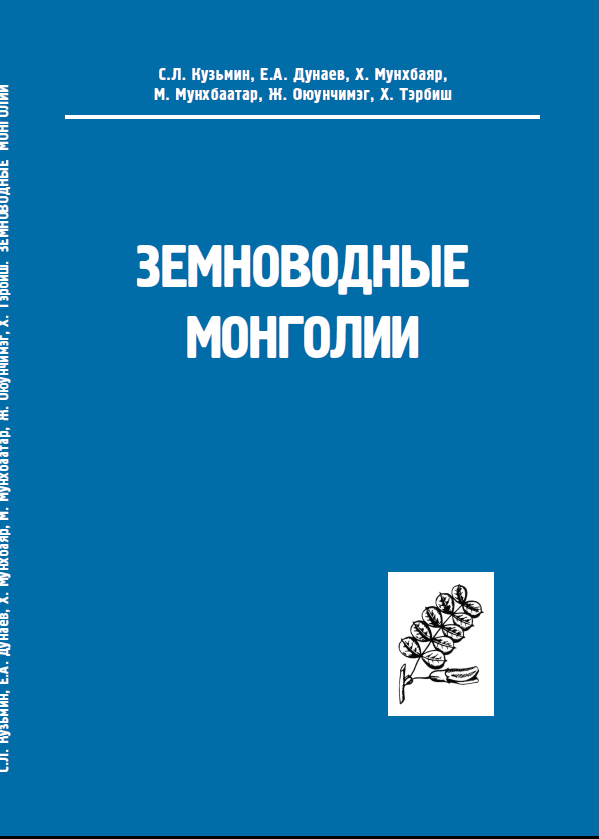|
Hyla japonica (Günther, 1859)
Japanese Tree Frog Subgenus: Dryophytes | family: Hylidae subfamily: Hylinae genus: Hyla |
|
Taxonomic Notes: Duellman et al. (Zootaxa 2016) treated two major clades as genera; AmphibiaWeb treats these two clades as subgenera(Hyla in the Old World; Dryophytes in the New World and East Asia), thus stabilizing traditional taxonomy. |
|
 B. Thiesmeier © PENSOFT Publishers (1 of 5)
|
|
|
|
Description Distribution and Habitat Country distribution from AmphibiaWeb's database: China, Japan, Korea, Democratic People's Republic of, Korea, Republic of, Mongolia, Russian Federation
Life History, Abundance, Activity, and Special Behaviors An and Waldman (2016) found that Hyla japonica males with natural infections of Batrachochytrium dendrobatidis called longer and made more rapid calls than did uninfected males. This may have two effects, which are possibly interrelated. Because female frogs are generally attracted to males that call longer and faster, pathogen transmission might be enhanced. Alternatively, the altered calls might result from selection on males for early reproductive success in anticipation of a premature death. However, it is unknown whether Japanese tree frog females actually prefer infected males. The clutch contains about 340-1500 eggs deposited singly or in a few clumps of 7-100 eggs. Females deposit their eggs both by day and night. Recently deposited spawn usually floats on the water surface. Some eggs are deposited on submerged plants. Metamorphosis occurs in summer or autumn; in some cases the tadpoles hibernate. Sexual maturity is attained probably in the 3rd-4th year of life. The majority of adults are 4-6 years old, but the maximum longevity is estimated as 6-11 years. Newly metamorphosed froglets prey upon Aphidinea and Cicadodea, whereas adult frogs feed on spiders and various insects. Active foraging occurs at twilight; during the day, frogs catch only the insects which approach them. This species feeds on spiders, Diptera, Hymenoptera, Coleoptera, and larval Lepidoptera. Trends and Threats Relation to Humans Comments
References
An, Deuknam, and Waldman, Bruce (2016). ''Enhanced call effort in Japanese tree frogs infected by amphibian chytrid fungus.'' Biology Letters, 12(3). Bannikov, A. G., Darevsky, I. S. and Rustamov, A. K. (1971). Zemnovodnye i Presmykayushchienya SSSR [Amphibians and Reptiles of the USSR]. Izdatelistvo Misl, Moscow. Bannikov, A. G., Darevsky, I. S., Ishchenko, V. G., Rustamov, A. K., and Szczerbak, N. N. (1977). Opredelitel Zemnovodnykh i Presmykayushchikhsya Fauny SSSR [Guide to Amphibians and Reptiles of the USSR Fauna]. Prosveshchenie, Moscow. Fei, L. (1999). Atlas of Amphibians of China. Henan Publishing House of Science and Technology, Zhengzhou. Kuzmin, S. L. (1995). Die Amphibien Russlands und angrenzender Gebiete. Westarp Wissenschaften, Magdeburg. Kuzmin, S. L. (1999). The Amphibians of the Former Soviet Union. Pensoft, Sofia-Moscow. Maeda, N. and Matsui, M. (1990). Frogs and Toads of Japan, 2nd edition. Bun-Ichi Sogo Shuppan Co., Ltd., Tokyo, Japan. Nikolsky, A. M (1936). Fauna of Russia and Adjacent Countries: Amphibians (English translation of Nikolsky, 1918, Faune de la Russie et des Pays limitrophes. Amphibiens. Académie Russe des Sciences, Petrograd, USSR). Israel Program for Scientific Translations, Jerusalem. Stejneger, L. H. (1907). Herpetology of Japan and Adjacent Territory, United States National Museum Bulletin 58. Smithsonian Institution, Washington, D. C.. Terent'ev, P. V. and Chernov, S. A (1965). Key to Amphibians and Reptiles [of the USSR]. Israel Program for Scientific Translations, Jerusalem. Vorobyeva, E. I. and Darevsky, I. S. (eds.) (1988). Amphibians and Reptiles of Mongolian People's Republic: General Problems. Amphibians.. Moscow. Won, H.-K. (1971). Choson Ryangso Pyachyungryuchji [Amphibian and Reptilian Fauna of Korea]. Korean Academy of Sciences, Pyongyang. Ye, C., Fei, L., and Hu, S. Q. (1993). Rare and Economic Amphibians of China. Sichuan Publishing House of Science and Technology, Chengdu. Zhao, E. and Adler, K. (1993). Herpetology of China. Society for the Study of Amphibians and Reptiles, Oxford, Ohio. Zhao, E. and Zhao, H. (1994). Chinese Herpetological Literature: Catalogue and Indices. Chengdu University of Science and Technology, Chengdu. Originally submitted by: Sergius L. Kuzmin (first posted 1999-11-10) Edited by: Kellie Whittaker, David Cannatella and Sierra Raby (2017-09-07) Species Account Citation: AmphibiaWeb 2017 Hyla japonica: Japanese Tree Frog <https://amphibiaweb.org/species/832> University of California, Berkeley, CA, USA. Accessed May 14, 2025.
Feedback or comments about this page.
Citation: AmphibiaWeb. 2025. <https://amphibiaweb.org> University of California, Berkeley, CA, USA. Accessed 14 May 2025. AmphibiaWeb's policy on data use. |




 Map of Life
Map of Life Read more about The Amphibians of Mongolia by Kuzman 2017
Read more about The Amphibians of Mongolia by Kuzman 2017